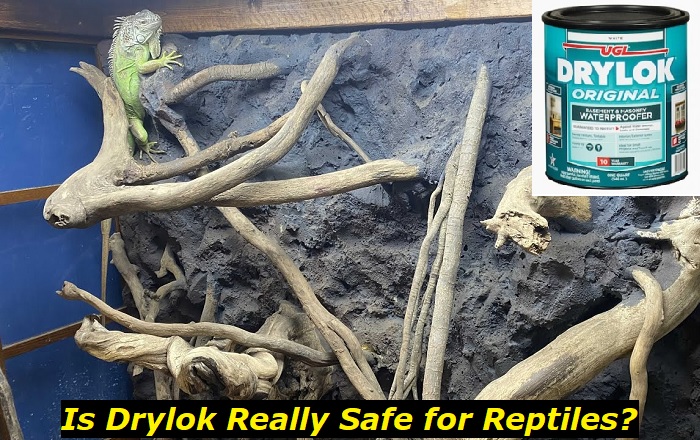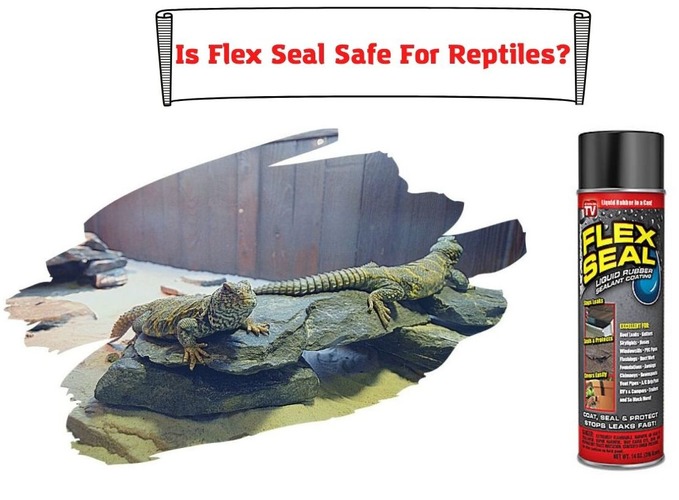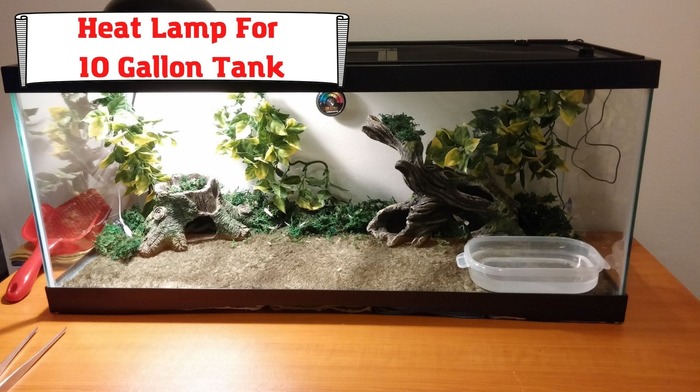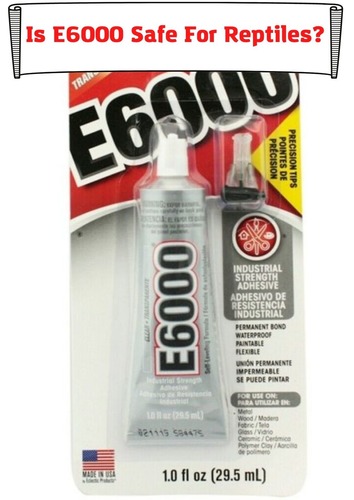Drylok is a ready sealing paint many pet owners use in their reptile enclosures. Apart from the aesthetics, Drylok paints and many other Drylok products help to provide protection and offer durability to your styrofoam rocks. You can also use it on any other type of rock in your reptile enclosure.
However, the pressing question that every responsible reptile owner often asks is whether Drylok is safe for reptiles. And if it is not, what is the possible harm?

This enlightening piece discusses the safety of Drylok for reptiles and many other related concerns.
Read on to find out!
What Is Drylock?
Drylok is a great waterproofing solution that many DIYers and homeowners use to repair and protect concrete and walls by making them waterproof. It can be a waterproof sealant or a cement product.
The Drylok hydraulic cement type is a fast-setting cement combined with paint, and it is used to protect and make surfaces waterproof. There are many types of Drylok products on the market. Many manufacturers claim to have a specially formulated rubber membrane that enters into the concrete to bond with its surface. This is how the concrete is kept waterproof.
Apart from the use of Drylok in the masonry industry, there are many other uses for this product. One very good example is the reptarium hobby. Many reptile keepers use Drylok cement to create fake rocks for their terrariums. Others use the Drylock Masonry waterproofer as an interior waterproof sealant to keep out moisture from the enclosure.
But the most commonly used Drylok product in the terrarium and vivarium hobby is the Drylok Masonry paints. They are often used to coat styrofoam, rocks, and other materials used for making fake rocks in the reptile enclosure.
Is Drylock Safe for Reptiles?
Drylok is not safe for aquatic life as it will have a long-lasting effect on the life of the animal. But can the same be said of reptiles?
Drylok is safe for reptiles as long as you follow the safety precautions of your product. Drylok works great on styrofoam, rocks, and wooden enclosures. You can use straight Drylok on styrofoam for your arboreal snakes or other low-activity reptiles.
You want to stick with the chunky silica crystals. But you want to use this setup for low-activity reptiles such as snakes and frogs.
If you keep sharp-clawed reptiles that are very active and tend to scratch more often than not, you may want to use some other products. One great product you can use is epoxy instead of Drylok on the foam.
Although epoxy may cost more in terms of the materials used, the cost is relatively cheap considering the durability of epoxy for such reptiles. Furthermore, you will not need to wait for curing time between coats nor worry about the alkalinity level in the enclosure when you use epoxy.
But that is not to say that Drylok will fail with reptiles that have claws. Many reptile owners have had success with leopard geckos and beardies in enclosures where they used Drylok. Generally, the hardscape should hold up just fine with no less than three layers of Drylok and a lot of drying time (no less than four hours).
What Are Some Possible Harms That May Arise from Using Drylok?
Using Drylok in the enclosure is pretty cool. However, there is some possible danger you may want to keep in mind as you use Drylok in your pet’s enclosure. Check out some of them below:
Toxic to Aquatic Life
The fact sheet of Drylok categorically states that the product is toxic to aquatic life. If you have a reptile that spends some time in the water, such as snakes, tortoises, and turtles, using Drylok in the water may have a long-term effect on the reptile’s health.
You want to pay close attention to the reptile. If you notice any unusual signs of ill health, it would be best to use other types of sealants.
To be safe, you might want to avoid Drylok altogether and use epoxy or grout to prevent any possible harm to your pet.
Allergies From Exposure to Mold
Using Drylok could expose your reptiles to molds in the enclosure. Interestingly, Drylok says on their label that their product can cause mold to grow. This is generally true. The chemical composition of Drylok paint is a source of food for mold.
When you use Drylok paints in your reptile enclosure, coupled with a few other factors such as the appropriate humidity level and light requirements, mold growth is almost inevitable. If the painted surface is close to a constantly wet substrate, that is a never-ending source of moisture to supply the mold with all the nutrients it needs to grow rapidly.
The harm in this is the resulting allergies and irritations your pet may have to deal with. Although mold-related illnesses may vary from one reptile to the other, symptoms to watch out for include loss of appetite, inactivity, sores and broken skin, etc.
It is not uncommon to also find your reptile making a wheezing sound as it struggles to breathe.
Other signs to look out for include runny eyes, runny nose, and any other strange noises.
The first step to arresting the situation is immediately taking your pet to the vet. You also want to remove the mold from the enclosure. It would be best to thoroughly scrape off the mold inside the enclosure.
This is important because after the medication at the vet’s, if your reptile continues to be exposed to the mold in its enclosure, it will continue to get sick. The drugs will not be effective in the long run. So, it would be to scrape off the mold.
You also want to ensure that your pet is not in the house when you remove the mold. Removing the mold will lead to the spread of its spores in the house. Since they are very tiny and can be easily inhaled, you want to keep your reptile outside until you get rid of all the mold in the house and the enclosure.
You want to pay close attention to your pet so that you can act fast in the case of allergies or irritation before the situation gets out of hand.
Is Drylok Toxic?
Yes, Drylok is toxic to aquatic life. You are not advised to use Drylok in your aquarium or a reptile enclosure with a standing water base.
The tech sheet of Drylok also has this information. Although this information applies to fish and other fully aquatic animals, some reptiles are somewhat aquatic.
So, if you keep one or two reptiles that usually spend more time in the water than they do out of the water, you want to avoid using Drylok on any decorations in the water. This is important because the toxic effect can be long-lasting for your reptile.
What Paint Is Safe for Reptiles?
There are many other great paints that are safe for reptiles. One of them is acrylic paint. But the problem with acrylic paint is that it is not water resistant. If you plan to use acrylic paint to cover rocks and other surfaces in your enclosure, it would be best to start with an acrylic primer.
This is important because the acrylic primer will provide a good moisture-resistant base for the acrylic paint.
Another thing you want to consider is the type of acrylic paint you choose. Many paints contain VOCs or volatile organic compounds. These are chemicals in the paint. While most of the chemicals leave the paint as it dries, some remain in the paint. So if you choose this alternative, you want to specifically shop for acrylic paints without any VOC or one with a very low VOC level.
Some great recommendations include Olympic premium, Dutch boy Clarity and Refresh, Valspar reserve, Benjamin Moore Aura, Clark+Kensington Enamel, Glidden Lifemaster, and Spread, Kelly-Moore: Enviro-Cote and Green Coat, and the Behr Marquee.
Final Thoughts
Drylok is usually safe for reptiles. However, not every reptile will react to Drylok the same way. Some may cope well with it. This is especially true for arboreal reptiles and other low-activity reptiles that do not scratch too often.
But if your reptile has claws and is not a low-activity individual, you may want to consider other safe alternative products for reptiles.
Also, the possible risks of using Drylok involve exposing your pet to allergens from the mold in the enclosure. As mentioned above, Drylok contains chemicals that mold feed on for survival. Using Drylok in your reptile enclosure may expose your reptile to mold. The consequences of this problem can be far-reaching.
You also do not want to use Drylok in a reptile enclosure with reptiles that spend most of their time in the water. Drylok is not safe for aquatic life and will have a long-term effect on the reptile. It would be best to find some other safer alternative.
- Dubia Roach Egg Sack: How To Understand if It’s Healthy? - January 2, 2023
- How To Feed African Dwarf Frog While on Vacation? - December 26, 2022
- Baytril for Bearded Dragon: Here’s What You Should Know - December 19, 2022



